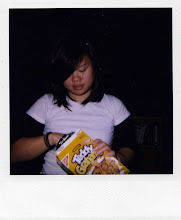I admit, I'm not the biggest fan of landscape photography. I think it's mostly because I can't seem to take any that I like. But, at the same time, I have to say that most landscape photographs that I see that I enjoy are of places that I have never been to, let alone heard of.
Secondly, back to an earlier question in our class - what makes a good photograph? I now have to say that not only is it a photograph that I want to keep looking at, it is something that I wish I had taken (sort of like when people ask you if you had a song that you wished you had written), and of something that I wished I knew
how to take. It makes me wonder, how did they do that?
So, that being said, I was very struck by
Arno Rafael Minkkinen's work. The best part about how he incorporated landscapes was the focus on portraits. I am a huge fan of shooting portraits, so that definitely piqued my interest.

This photograph, titled Laurence, is a great example. I couldn't stop staring at it because I kept wondering how he took it, where the subjects were lying,
how they were lying. Is that her arm? Someone else's leg? I can't seem to tell. I am transfixed by this photograph. Most importantly though, it seems as if Minkkinen uses his subjects as a way to pay homage to nature.

This photograph, titled Self-portrait with Olivia, hinted at what Minkkinen seemed to be doing. Although body parts and faces were on the foreground of the photograph, there are times where it seems to simply be a decoration to the landscape it is in. I also liked the fact that there was no clothing in his photographs because it suggests that the bodies were part of nature.
Another artist I really enjoyed was
John Pfahl. Though I wasn't as taken with all his work as I was with Minkkinen, I did like his "scrolls" set. The way it was formatted really demonstrated the connection between sky and earth.

This photograph, aptly titled "the sky below", suggests what I mentioned earlier. It's difficult for me to really like landscape art, which is why I prefer looking at them in interesting or different formatting. This might also be why I am not commenting on Ray Metzker's work as there is no real yay factor for me (aside from the fact that there are pieces that look like they could have been painted).

















































